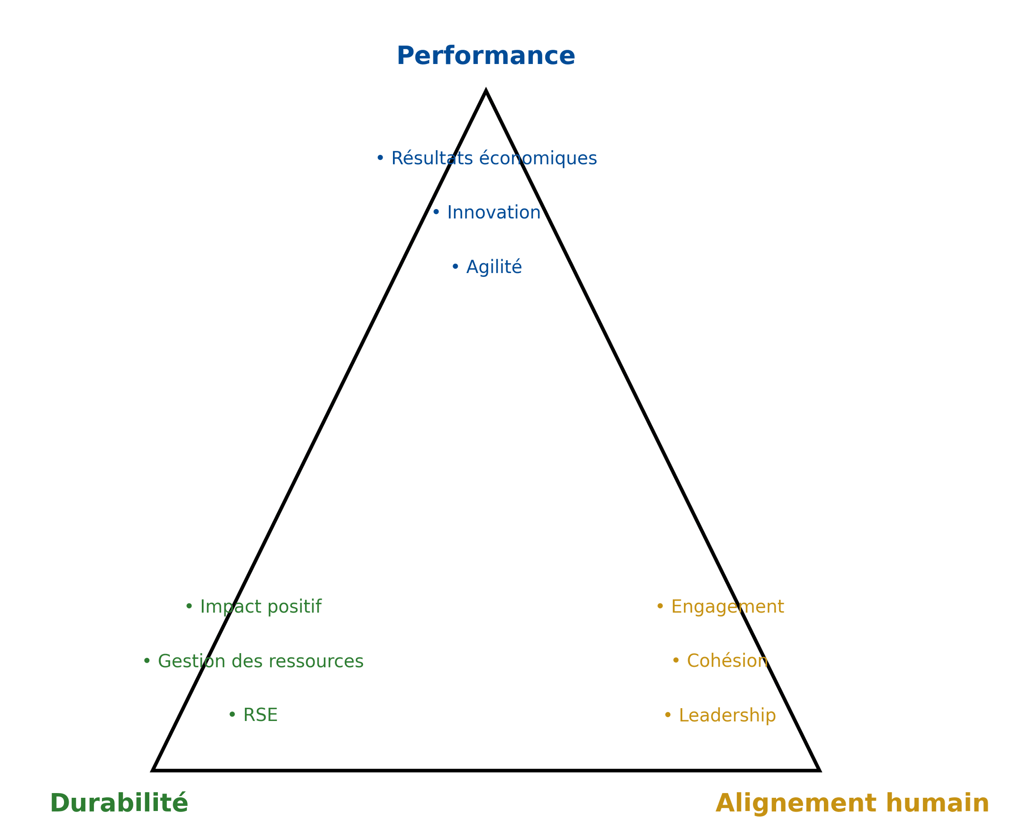Linking Performance, Sustainability & Human Alignment: The Key to Successful Business Transformation
Discover how to combine economic performance, sustainability, and human engagement to ensure the success of your strategic transformation projects.
CONSEILS
Bethy Jean Philippe N’GUESSAN
2 min read


Introduction – Transformation as a Balancing Act
A few years ago, I supported a multinational undergoing a major reorganization.
The objectives were clear: improve profitability, streamline operations, and reduce costs.
On paper, the project was a success. Financial KPIs were all in the green… but in the offices, the atmosphere had shifted. Smiles had become rare, voluntary departures were increasing, and innovation seemed frozen.
That’s when I realized — or rather confirmed — that the success of a transformation cannot be measured by numbers alone. True performance combines economic results, sustainability, and human alignment. In today’s uncertain world, this trio is not a luxury but a strategic necessity.
The Illusion of Success Through Numbers Alone
Too often, transformation projects focus on a single axis: economic performance. Cost reduction, process optimization, productivity gains… These levers are necessary, but they are not enough.
A purely numbers-driven transformation can lead to:
Gradual employee disengagement
Passive or active resistance to change
A lack of innovation and creativity
I’ve seen companies “succeed” in reorganization on Excel — but fail on the ground due to a lack of buy-in. A figure can be achieved by force. Engagement must be built, not imposed.
The Success Triangle: Performance, Sustainability, Human Alignment
For a transformation to last, it must rest on three interconnected pillars:
Performance
Not about giving up economic targets, but embedding them in a global vision. Strong performance thrives on innovation, operational efficiency, and agility in the face of change.Sustainability
CSR is not a strategic appendix — it is a driver of competitiveness. Integrating sustainability means optimizing resource use, reducing environmental footprint, and maximizing positive social impact.Human Alignment
Successful transformations engage collective intelligence. Human alignment means giving meaning, creating cohesion, and developing conscious, inspiring leadership.
💡 Real-life example: In a multicultural context, I implemented participatory workshops involving all hierarchical levels. Instead of imposing a new supply chain process, we co-created it. The result: rapid adoption and an 18% improvement in operational performance in less than a year.
How to Implement This Integrated Approach
Key steps for leaders and managers:
Clarify the strategic vision: Why are we changing? What value will it bring to clients, employees, and society?
Align governance, culture & processes: Ensure that strategic decisions match internal values and ways of working.
Co-create with teams: Use participatory, inclusive methods to encourage ownership.
Measure with balanced indicators: Combine financial KPIs, CSR metrics, and human indicators (engagement, workplace climate, innovation).
💡 Leadership Tip: Before launching a transformation project, ask yourself:
Does this project serve only my financial goals, or also a societal purpose?
Do my teams understand the “why” behind the change?
How will I measure success beyond the numbers?
The Benefits of a Sustainable & Human-Centered Transformation
An integrated approach delivers measurable and lasting benefits:
Short-term: Increased productivity, better service quality, faster innovation
Long-term: Talent retention, organizational resilience, stronger brand reputation
Conclusion – Rethinking How We Change
In a world where uncertainty is the norm, sustainable performance can no longer be reduced to Excel spreadsheets. It emerges from a delicate balance between results, responsibility, and relationships.
The transformations that succeed are those that create positive impact, engage employees, and prepare the company for future challenges.
Leaders and managers: If you want to launch a transformation that doesn’t just change the numbers but truly transforms your organization, I invite you to contact me for a tailor-made strategic diagnosis or an exploratory conversation.
Expertise
Strategic Procurement & Supply Chain Consulting:
Contact Me
jeanphilippe.bethy@gmail.com
+33 07 69 05 74 82
© 2025. All rights reserved.
Subscribe to Our Newsletter
Cost Optimization
Performance Management
Change Management
Synergies between Procurement, CSR & Digitalization
books
Photography
My World


